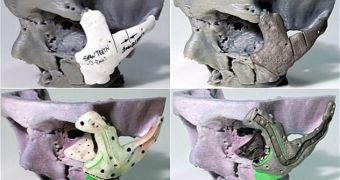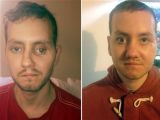Plastic surgery is a complex science, one that can become risky and exhausting, even when operations are done in steps. 3D printing may have just removed the greater part of the hardship associated with the field though.
Prosthetics is one area of medicine and healthcare that 3D printing was quick to assist, but plastic surgery is a bit more complicated than that.
It didn't stop Adrian Sugar and his team at the maxillofacial unit at Morriston Hospital in Wales from using it anyway though.
Especially since he and his unit have been trying to figure out how to use the technology in their work since the 1990s.
They 10-year-long wait has come to an end at last, though. For the first time, they managed to use 3D printing technology to reconstruct the face of a patient.
Stephen Power suffered a traumatic motorcycle crash a while ago, and had to undergo facial reconstructive surgery at the Morriston Hospital Center for Applied Reconstructive Technologies in Surgery (CARTIS).
He had his top jaw broken, along with his nose and cheekbones. He also fractured his skull. Had the doctor and his team gone about things the normal way, with plaster molds and step-by-step operation, chances are the man's face would not have been fully restored.
They would have sent a CT scan of the patient to the National Centre for Product Design + Development Research at Cardiff Metropolitan University (the other half of the CARTIS team).
Product Design + Development would have made a physical model that would let the CARTIS surgeons practice the surgeries for the deformities.
With 3D printing, however, they were able to make custom prints from Power's CT scan, both for surgical guides but also for the implant, eventually restoring most of the symmetry.
Granted, there is still some evidence that Power suffered an accident, but it is a clear improvement over the way he looked like before. And all because 3D software and printing tech could produce a symmetrical model of his skull from a scan of it.
Thus, during the surgery, the CARTIS team re-fractured the cheekbones, then implanted a 3D printed titanium piece (which held the bones in place). It let Power walk in public without concealing his face with a hat and glasses.
Use of 3D printing in the medical field is bound to rise after this. Having a patient say it had a life-changing effect on him is bound to turn a few heads. Power's operation will even become part of the “3D Printing: The Future” exhibit at the Science Museum in London.

 14 DAY TRIAL //
14 DAY TRIAL // 
